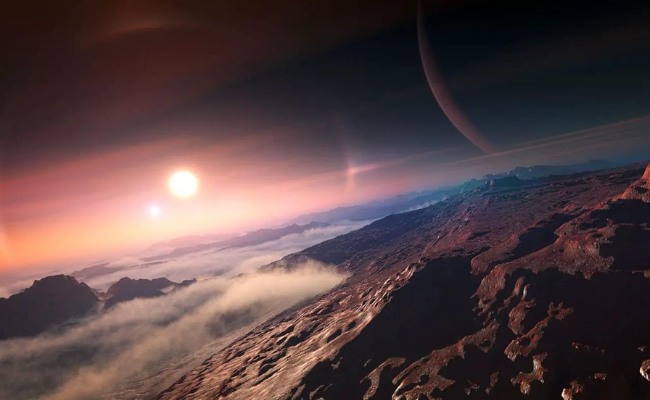Earth-Like Planet Discovered Nearby – A Closer Look at Wolf 1069 b
Scientists have discovered something special among the stars: a habitable planet they named Wolf 1069 b.
More importantly, it is relatively near Earth because it is 31-light years away. Even better, it could help answer questions like, “Are there other lifeforms in space?”
Other experts focus on its potential to support human life. After all, it has unique properties that might help it sustain liquid water.
What do we know about Wolf 1069 b?
The newly discovered Wolf 1069 b is an Earth-mass exoplanet in the habitable zone of its star.https://t.co/aq6WnhxG0l
— CNET (@CNET) February 3, 2023
A team from the Max Planck Institute for Astronomy found the newly discovered heavenly body using the CARMENES spectrograph at the Calar Alto Observatory in Spain.
It is a 3.5m telescope that detected Wolf 1069 b by gathering radial-velocity data. The team published their findings in the journal Astronomy & Astrophysics.
According to the online paper, Wolf 1069 b is roughly 1.36 times the mass of our planet but approximately 1.08 times its size.
Like Earth, it revolves around a star, Proxima Centauri, roughly 0.07 astronomical units (AU) away.
According to Space.com, that distance is similar to Mercury’s proximity to the Sun. Temperatures can reach up to 800 °F or around 426.667 °C!
Yet, astronomers say that Wolf 1069 b is within its star’s habitable zone. As a result, liquid water might exist on this newly discovered planet.
In other words, the planet might be able to sustain life. However, verifying that quality requires more than mere observation.
Lead author Dr. Diana Kossakowski explained that their discovery is a great breakthrough in discovering habitable planets.
She explained that Wolf 1069 b is the sixth closest Earth-mass planet near the habitable area of its parent star.
“Wolf 1069b is a noteworthy discovery that will allow further exploration into the habitability of Earth-mass planets around M dwarfs,” the researchers concluded.
What could Wolf 1069 b mean for humans on Earth?

Photo Credit: pledgetimes.com
Astronomers have been feeling excited about the possibilities that Wolf 1069 b could hold. It could provide further insight into how the universe creates life.
Eventually, it might answer more profound questions like, “What is our place in the universe,” or “Why are we here?”
On the other hand, the general public might be interested in other planets that might hold extraterrestrial life.
Unidentified flying objects or UFOs have captured the public’s attention after people discovered several hovering in the United States.
It turned out that these UFOs were balloons containing signal-capturing technology from China. US jets shot them down, and China admitted that the flying objects were its property.
Still, public interest in UFOs had been increasing long before these balloons entered US airspace.
For example, a silly online campaign to raid Area 51 became viral in 2019. Its supporters believed the US government hid extraterrestrial life in that location.
Last year, reports of UFO sightings increased in the United States. In response, numerous lawmakers called for further investigation into these phenomena.
Moreover, some folks want to know if we could live on other planets.
For example, Elon Musk wants his company SpaceX to reach Mars so that humanity would not remain a “single-planet species.”
Conclusion
Scientists recently discovered a potentially habitable planet dubbed Wolf 1069 b. It is a significant breakthrough in learning more about the universe.
However, we lack the technology to sustain life in outer space, let alone reach these heavenly bodies. Still, it’s amazing how far our tech has advanced, hasn’t it?
Would you like to know more about the latest tech breakthroughs? Follow Inquirer USA to keep up-to-date with digital trends.

